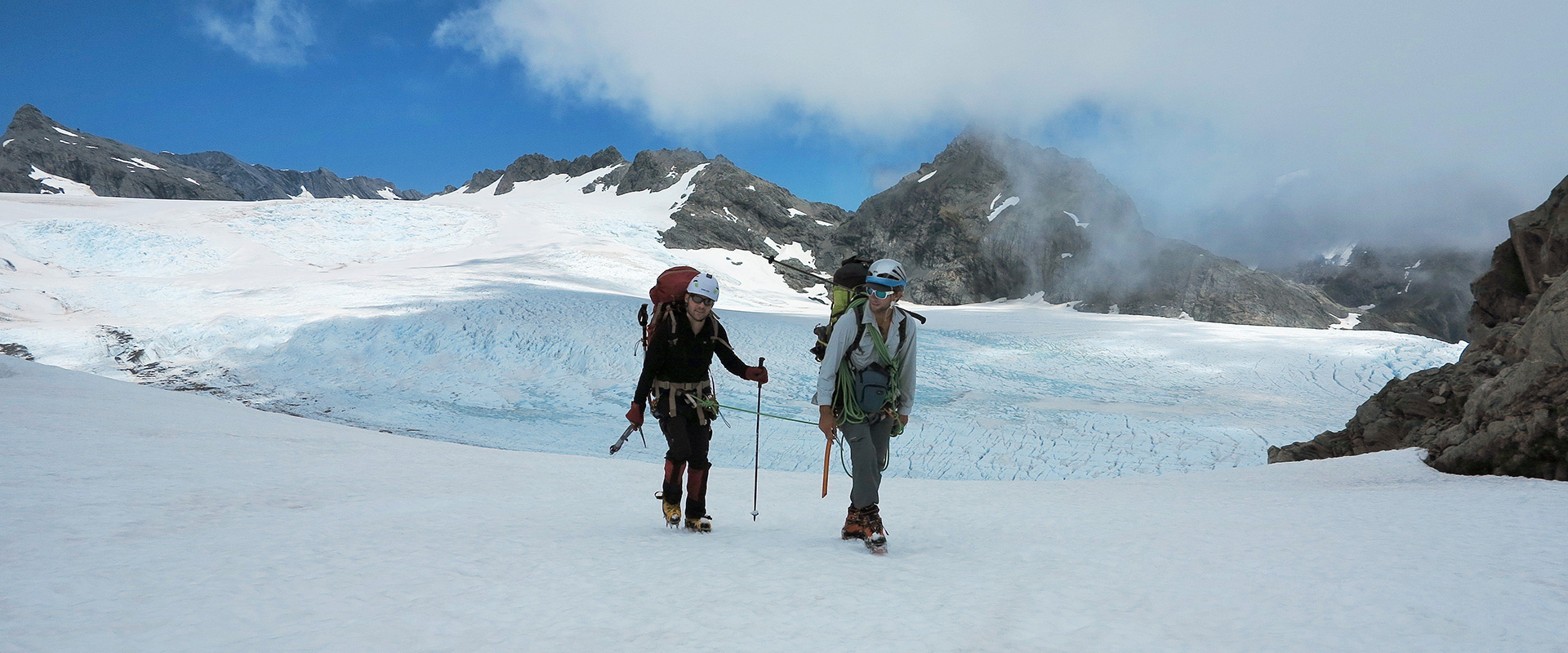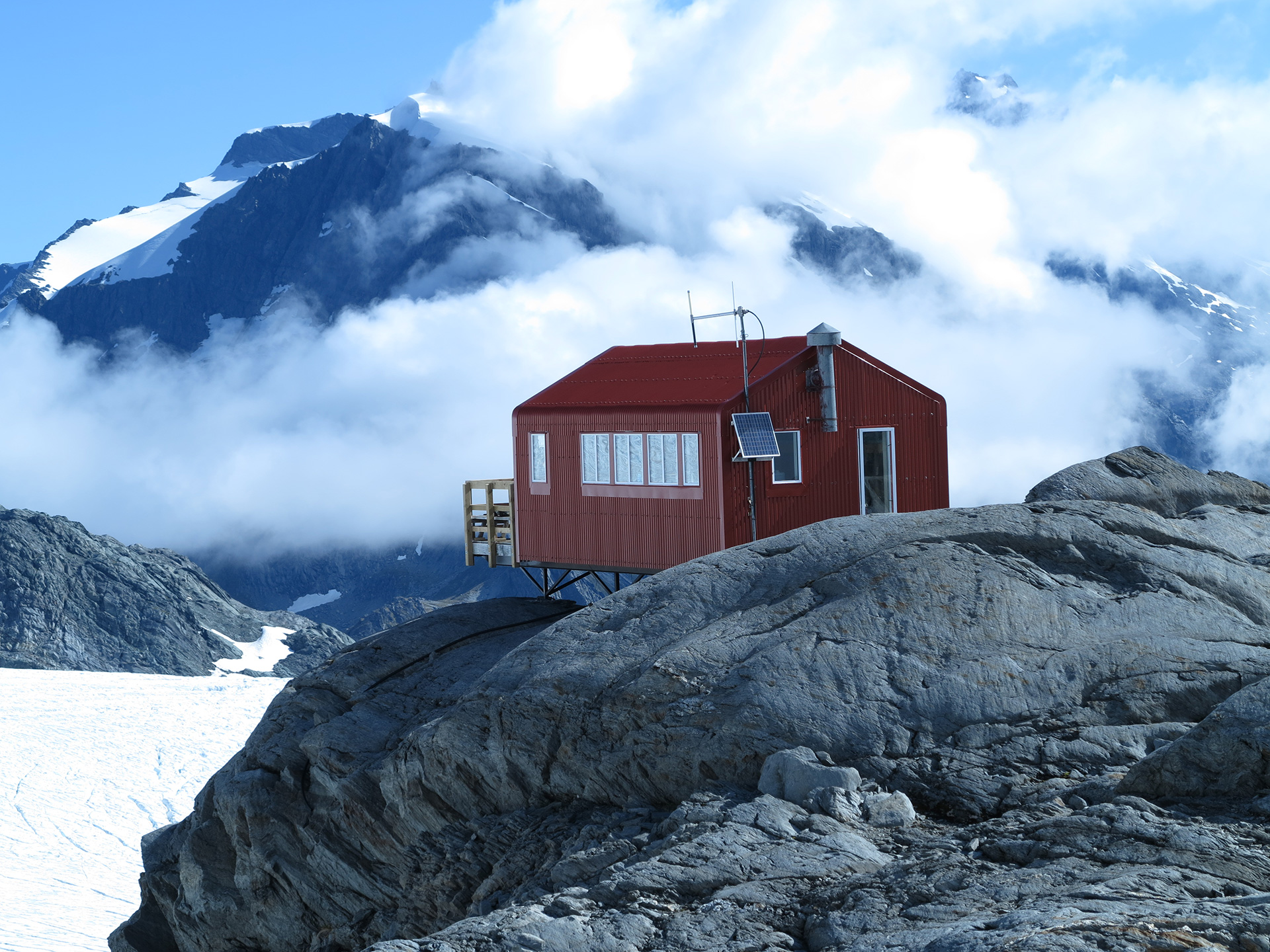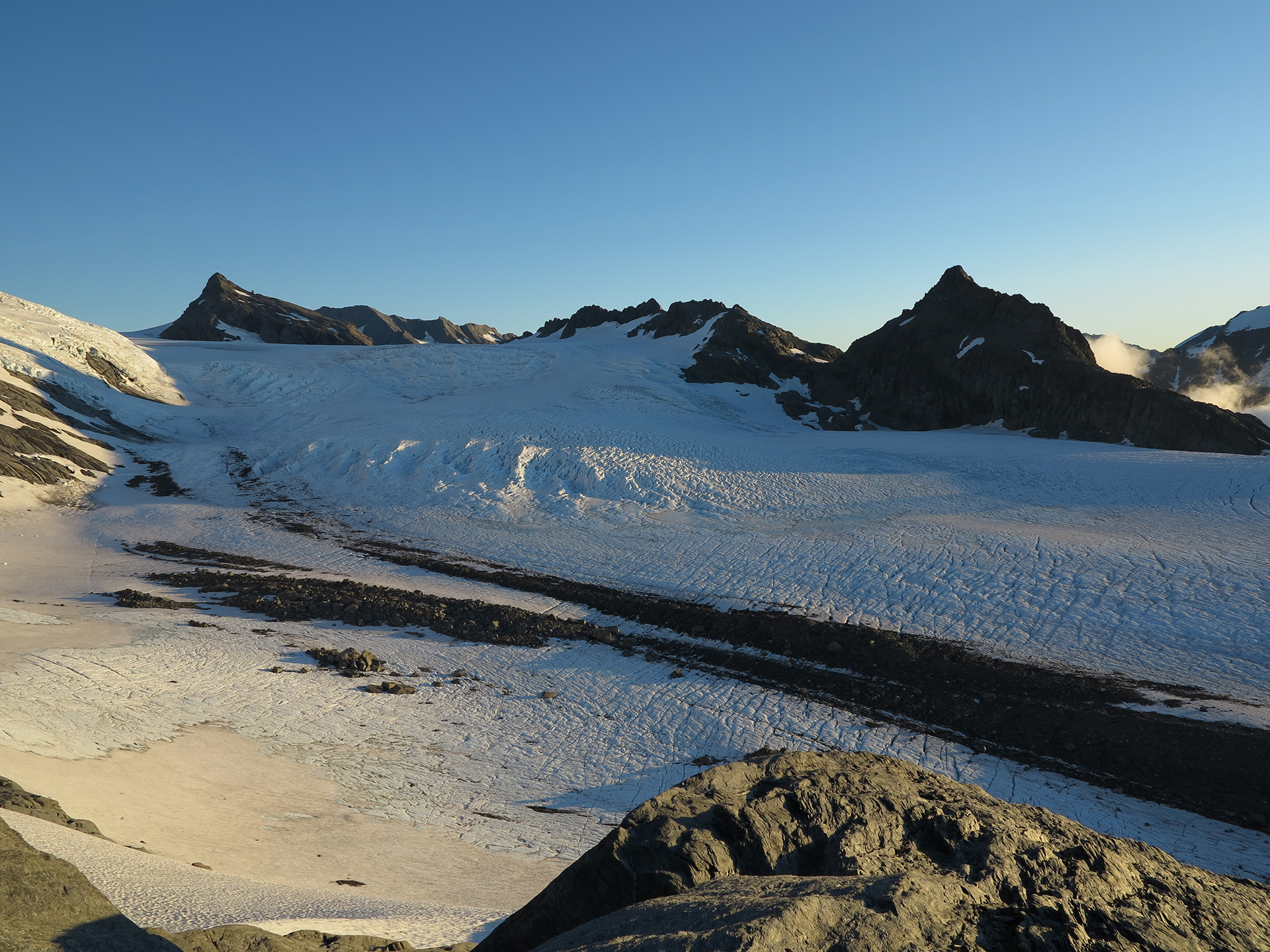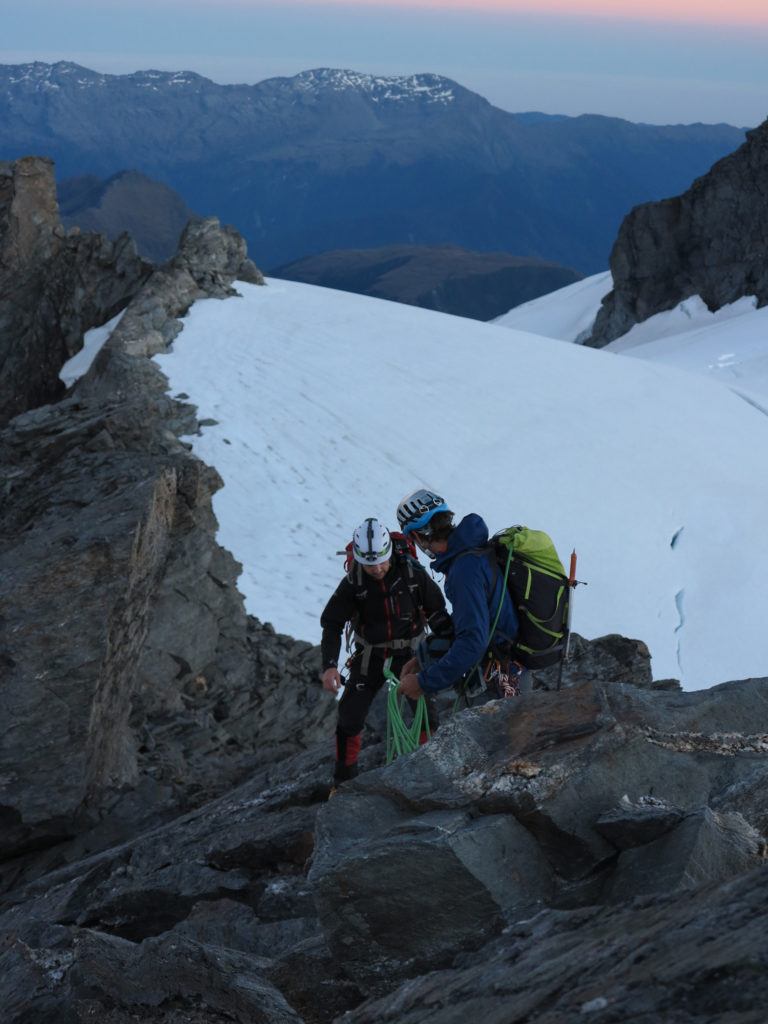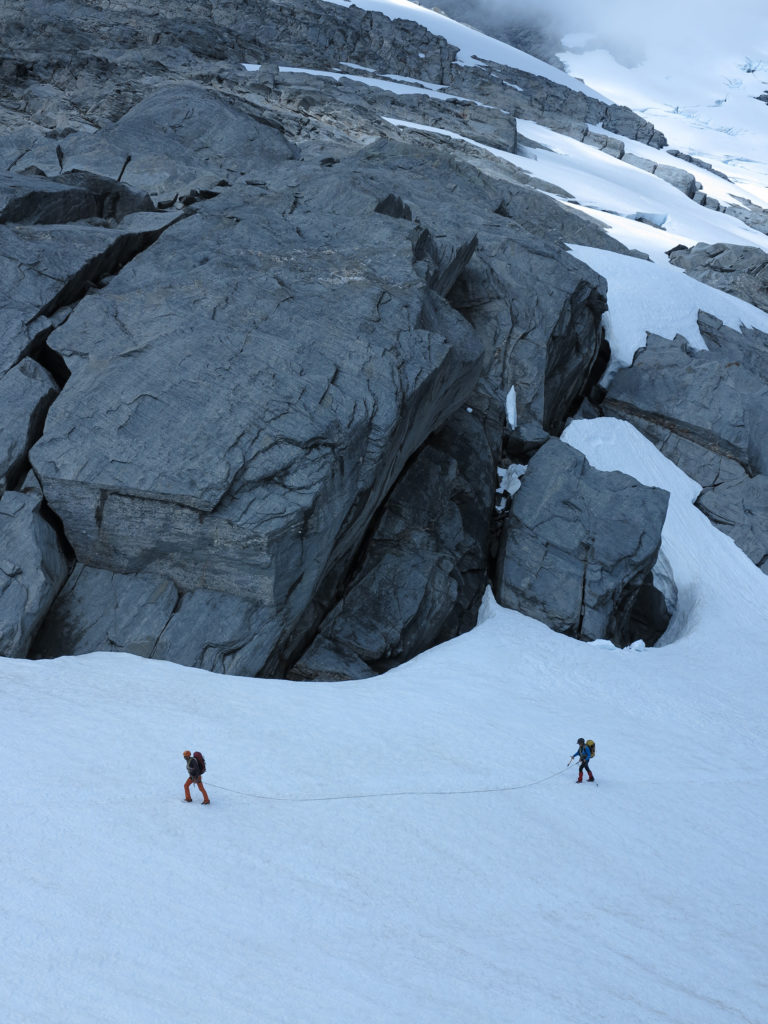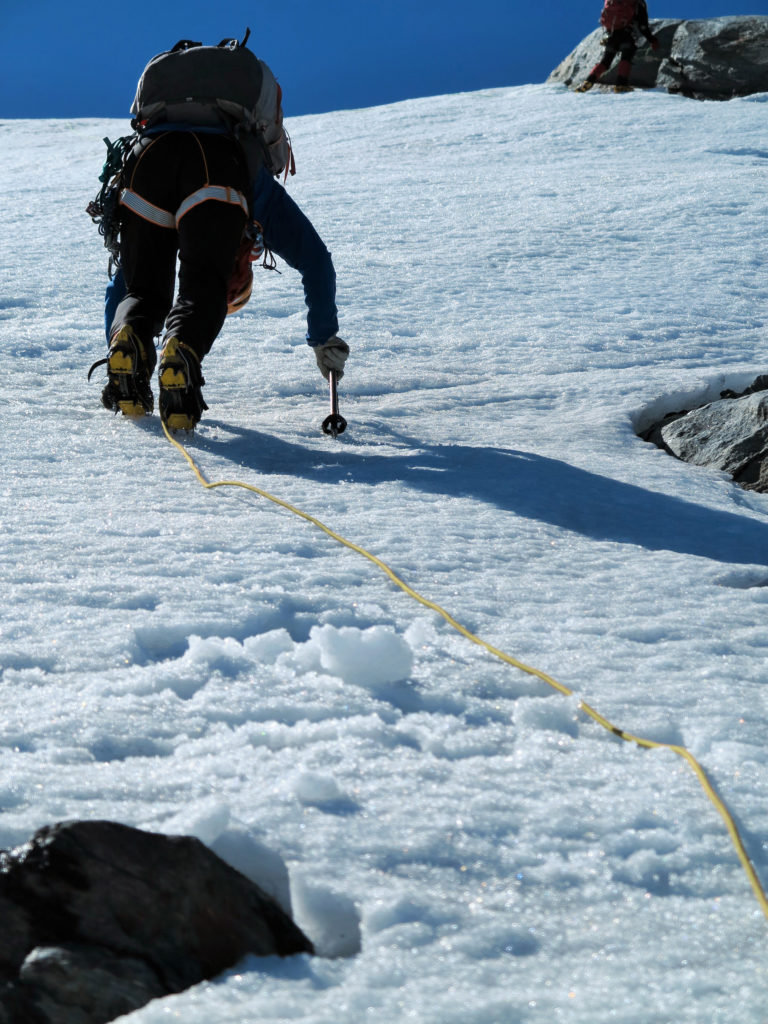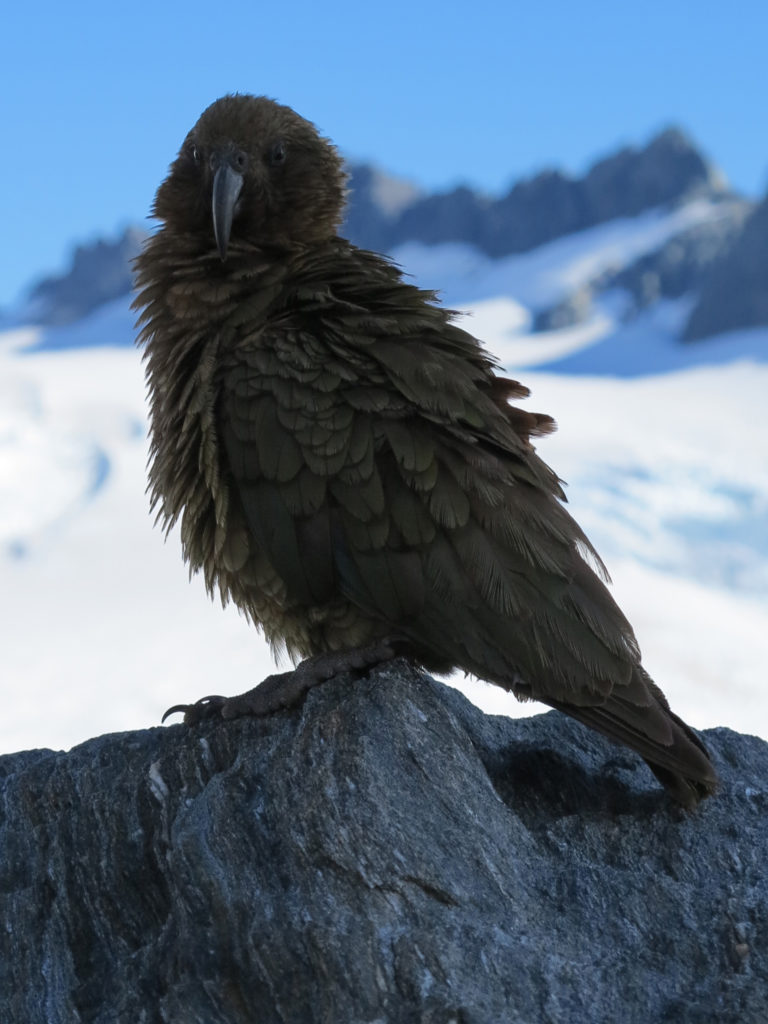Climbing Mt Aspiring
Mt Aspiring National Park, Otago, New Zealand
Could this be your first mountaineering experience?
There’s a mountain on New Zealand’s south island that is beautiful, snow-covered, and challenging, yet achievable by anyone with a reasonable level of fitness, a few basic skills under their belt, and a guide.
Tititea / Mt. Aspiring lies in Mt. Aspiring National Park, just west of Wanaka. At 3033m, it’s the highest mountain in New Zealand outside of the Aoraki / Mt. Cook region and is known as the Matterhorn of the South for its near-perfect triangular profile. A straightforward climbing route snakes up the northwest ridge from a perfectly-positioned base camp overlooking the Bonar Glacier. Book a week off work next February and a guide, fill the weekends until then with training, and you’ll be sunning yourself high in the sky before you know it.
-
Location
Mt Aspiring National Park, Otago, New Zealand
-
Distance
1.3 km +
-
Duration
3-4 days
-
When to go
November to March
-
Sleeping
Huts & Camping
-
Permit required
No
Trip Highlights
- Standing on the highest point for over 100 km, a carpet of snowy peaks at your feet.
- Pushing yourself mentally and physically to achieve a goal.
- The hike up/down the Matukituki Valley is a gem in its own right.
- Everyone loves a ride in a helicopter!
- Spending cosy nights in a mountain hut with a blizzard blowing outside.
History
The mountain known to the Māori as Tititea, meaning Glittering or Glistening Peak, was given the name Aspiring in 1857 by the chief surveyor for Otago province. It was first climbed in 1909 by one Major Bernard Head, ably assisted by two of the period’s most revered guides – Jack Clarke and Alex Graham. The peak and surrounding area were incorporated into Mt. Aspiring National Park in 1964. The Colin Todd Memorial Hut, owned by the New Zealand Alpine Club and administered by the Department of Conservation, is the perfect base for an ascent of the northwest ridge. It was built in 1960 thanks to an anonymous donation after the tragic death of the young Dunedin climber in a motorcycle accident. It was rebuilt in 1996.
When to go
The weather is generally at its most stable in February and March, but summer ascents are possible anytime from November to April. A winter ascent is a very different proposition, and really only achievable by highly experienced mountaineers.
Access
There are two main approaches to the mountain – via Bevan Col or the French Ridge – depending on the time of year and which route you’re planning to climb. The former is the usual way to access Colin Todd Hut, and there are two distinct ways of getting there.
- Drive from Wanaka up the Mt. Aspiring Rd to Raspberry Creek (three hours), and then start walking along the West Matukituki Track. Stay on the left bank when the track crosses over to the Rob Roy Glacier and continue up the valley, past Aspiring Hut, through Shovel Flat and Pearl Flat to Scotts Rock Bivouac (total 17 km). This is where it gets steep. Follow cairns and/or navigate yourself up the head of the valley to Bevan Col, where you’ll top out at the Bonar Glacier. I’m making this sound easy, but it’s not. Rope up for glacier travel and head due north across the river of ice, watching out for crevasses, until you reach the safety of Colin Todd Hut (2 km). You may want to split this journey into two days, overnighting at Aspiring Hut.
- Take a helicopter. That’s it. Okay, choppers will set you down at Bevan Col and you’ll still have to cross the glacier, but that’s still a lot of energy saved for the main climb.
Climbing Routes
As you’d expect of a pyramidal mountain, there are myriad climbing routes of various grades to choose from. The most straightforward of these is the northwest ridge. Again, this is approached differently at different times of year but either way, it can take 12 to 16 hours.
Early in the season, the preferred route is via the Ramp, a steep slope of compacted snow that leads from the glacier up to a point high on the ridge. It’s simpler than fighting up the mixed snow and rock of the ridge proper, but somewhat more dangerous. The 40° angle of the slope leaves no room for mistakes, and a slip here can be fatal. After December, when warmer weather has opened up too many crevasses to access the Ramp, the ridge proper is the way to go. The climbing itself is fairly easy, more like scrambling, although there is some exciting exposure! It’s often only at the summit cone that crampons are required.
Accomodation
Colin Todd is a bright red hut perched at 1780m on Shipowner Ridge, situated perfectly for summit attempts on Aspiring. The view of the mountain and out across the Bonar Glacier is killer. There are 12 bunks, with mattresses, which fill up on a first-come, first-served basis, so you’ll need to be prepared to camp or bivvy outside the hut if it’s full. In fact some people prefer this option to a crowded, noisy room full of smelly climbers! There’s a water tank, outside lavatory and a radio for contacting the DOC.
Equipment
Unsurprisingly, you’re going to need a full mountaineering rig for this one, including crampons, a walking axe, harness, helmet and rack of assorted ironmongery, plus ropes and the knowledge to use them. Clothing materials should keep you warm but be designed to wick perspiration efficiently; the last thing you want is a sweaty base layer freezing solid against your skin.
Colin Todd is generally warmer than many other NZ alpine huts, but of course the nighttime temperature will depend on many factors. A 0°C sleeping bag might be enough in the summer. You’ll also need a stove, fuel and all your food. As noted above, you should bring a tent as well in case the hut is full.
Safety
This is not a hike. Plenty of people die attempting Mt. Aspiring, especially via the treacherous Ramp route. In 2016, climbers discovered human remains belonging to an unfortunate soul who, it was later discovered, had disappeared 38 years previously.
Prospective climbers must have some previous experience. Complete newbies should first attend a mountaineering course, and then seriously consider taking a guide, or at very least a very experienced friend. Neither the hike-in nor the climbing routes are easy to follow.
Costs
No permit is required to climb Mt. Aspiring, but a bunk in Colin Todd hut costs 40 NZD (20 NZD for NZAC members). Camping outside is free. If you fancy the helicopter option, one way transfers to/from Bevan Col cost 1170 NZD for two passengers (Aspiring Helicopters). If you would like a guide, Adventure Consultants are the premier guiding company in the area and offer a high standard of professionalism and rate of success. Their rate is 5,250 NZD for a five-day trip, which includes a chopper in but not out.
Useful Links
More Adventures like this
-
It’s no secret that the Blue Mountains and Wollemi National Parks together comprise an unmissable location for recreational canyoners, but a short distance away lies another canyoning playground wit...
Canyoning in Bungonia
Bungonia National Park, NSW
-
Hiked Kosciuszko's Main Range circuit in summer, and think it’s done and dusted? Think again! The same route in winter, in below-freezing temperatures, is a whole different story.
Snowshoeing Kosciuszko
Kosciuszko National Park, NSW







